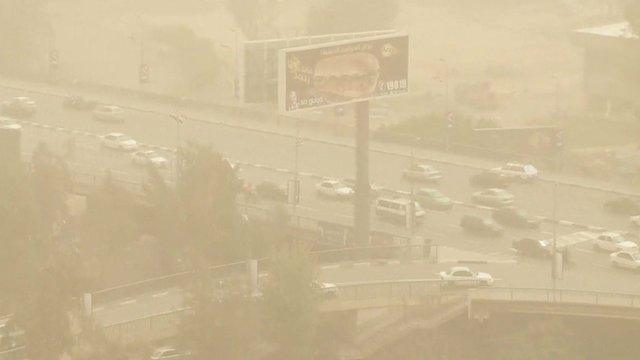Middle East worst hit by rise in sand and dust storms
- Published
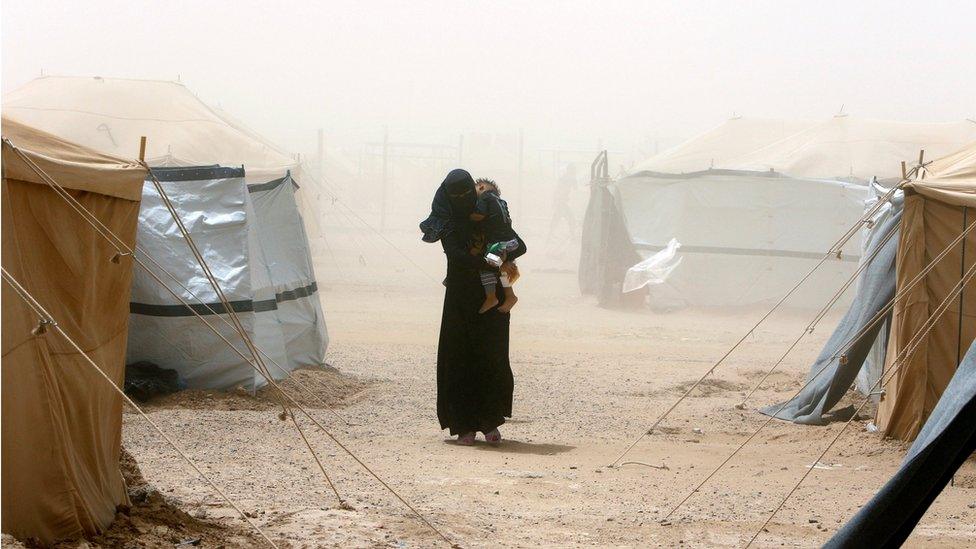
UN scientists predict that Iraq could witness 300 dust events in a year within 10 years,
The Middle East has been the worst hit by significant rise in sand and dust storms, with major impacts on human health, United Nations scientists say.
Iran and Kuwait are the most affected countries, largely because of sand and dust blowing in from Syria and Iraq.
Mismanagement of land and water amid conflicts in the region has been a key factor, as well as climate change.
Meteorologists say sand and dust storms are also happening in new places like some parts of Central Asia.
"In the Middle East there has been a significant increase in the frequency and the intensity of sand and dust storms in the past 15 years or so," said Enric Terradellas a meteorologist with the World Meteorology Organisation's sand and dust storm prediction centre for the region.
"One of the main sources of sand and dust storms is Iraq, where the flow of rivers has decreased because of a race in dam constructions in upstream countries.
"That has led to the disappearance of marshes and drying up of lakes both in Iraq and Iran, and the sediments left behind are very important sources of dust in the region."
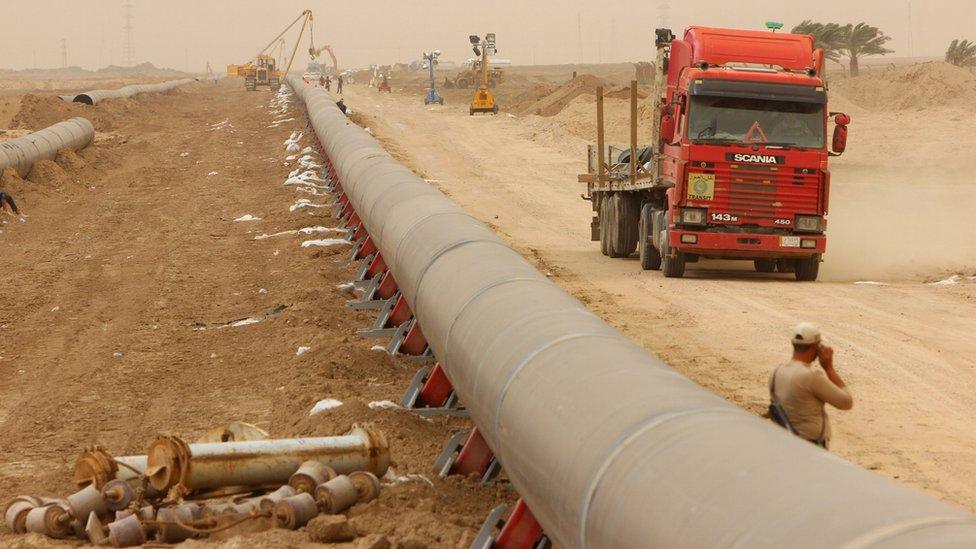
The disappearance of marshes and drying up of lakes has led to an increase in the intensity and frequency of sand dust storms in Iraq
Deserts have always been the source of sand storms in the region, but scientists say unsustainable mining, oil extraction and agriculture as well as intensive military conflicts are worsening the situation.
The United Nations Environment Programme (UNEP) has predicted that Iraq could witness 300 dust events in a year within 10 years, up from around 120 per year now.
Health toll
Iranian health department officials have said 14 provinces are affected today by dust storms, including Tehran.
"The air is so polluted here and I have developed breathing problem," Jasem, a businessman in Ahvaz in southwest Iran told the BBC, coughing over the phone.
"Coughing is usual thing for me now and we need to keep the windows closed and use the air-conditioner all the time."
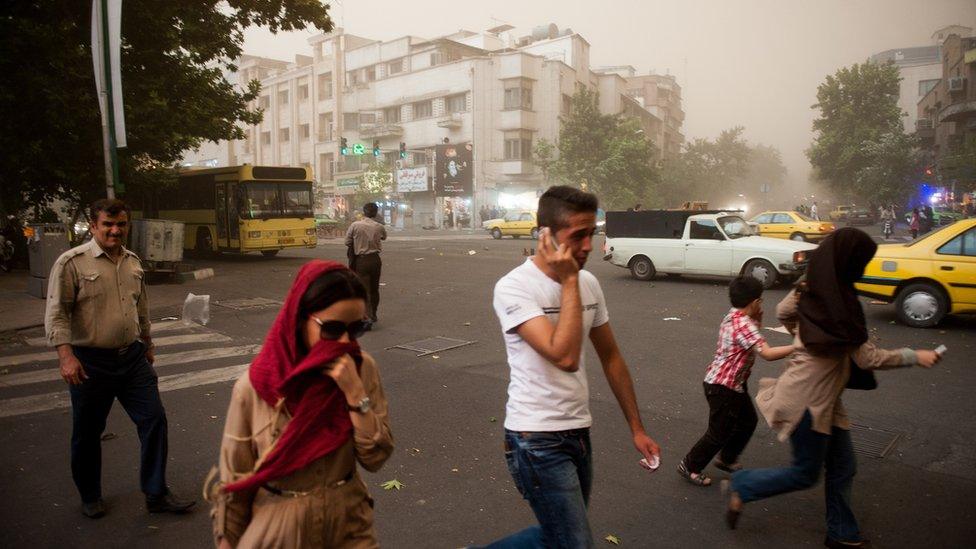
Iranian health officials have said up to 14 provinces have been affected by dust storms recently
Iman, a university lecturer in south-eastern Iran, said going out was becoming increasingly difficult.
"We can feel the sand coming in from the west of the country and we don't let our kids play outside the house."
Scientists said data from Syria was not easily available, but that there were enough grounds to believe that it is another major source of sand and dust.
"People aren't tending the land in agricultural areas appropriately - which means planting crops and tending them in a way that is sustainable - because they are off either being refugees or involved in the fighting," said Nick Middleton of St Anne's College, Oxford, one of the reviewers of the UN study.
"So the former agricultural areas, I suspect, are more active as wind erosion sources now."
Meteorologists say some parts of Central Asia are also experiencing the storms.
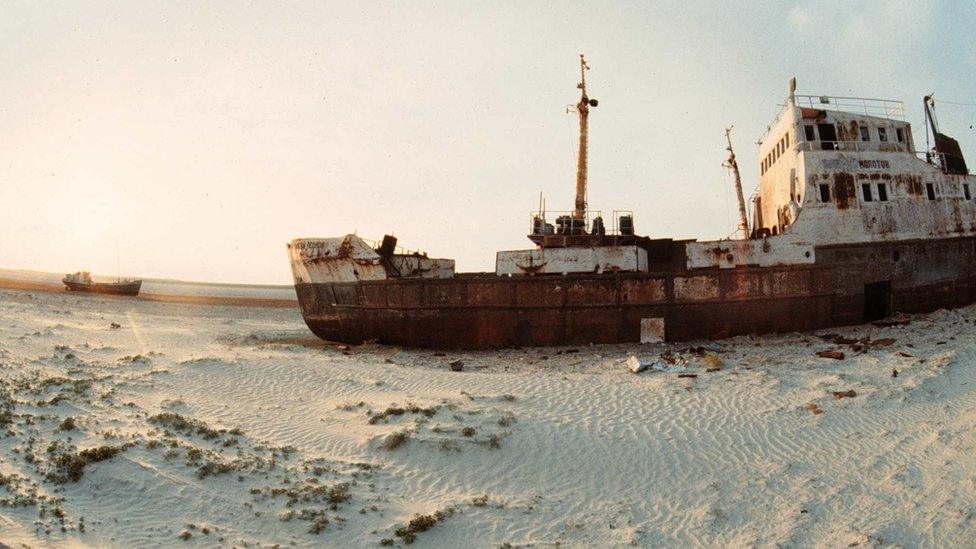
Desert-like conditions are witnessed in what used to be the Aral Sea in Kazakhstan
"The Aral Sea is drying up and the dust problem is also increasing in Kazakhstan and Mongolia, for instance," said Alexander Baklanov, another sand and dust storm expert with the World Meteorology Organisation.
The dust and sand from Mongolia and the Gobi desert reach China, the Korean peninsula and Japan, where they have caused major health concerns.
Storms from the Sahara desert are also believed to be spreading lethal meningitis spores throughout central Africa.
"A dust storm consists of massive amount of particulates in the air and when people breathe it, these can get down their lungs and cause respiratory illness and heart disease and so on," said Diarmid Campbell-Lendrum, a health and climate change expert with the World Health Organisation.
The WHO has said dust storms contribute to poor air quality that is blamed for the death of 7 million people every year.
- Published8 September 2015
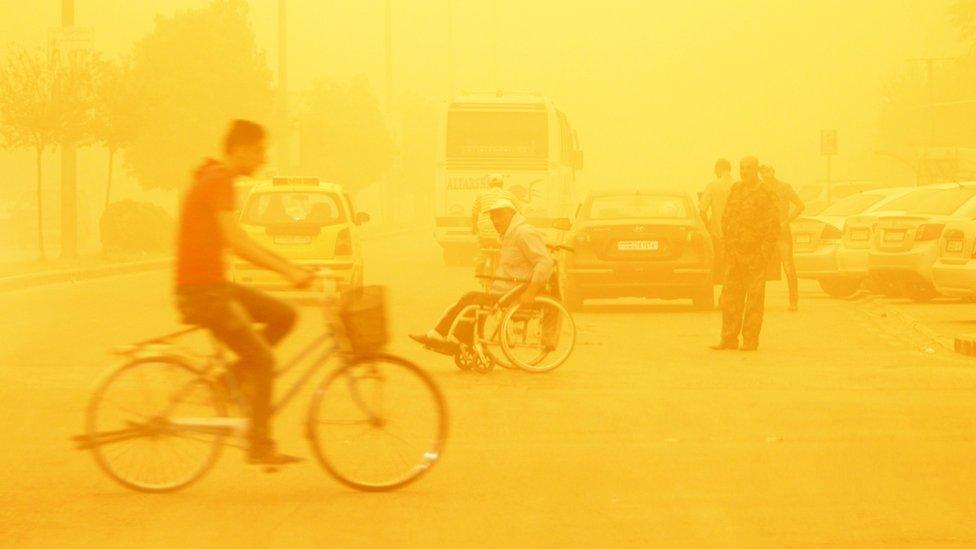
- Published9 September 2015
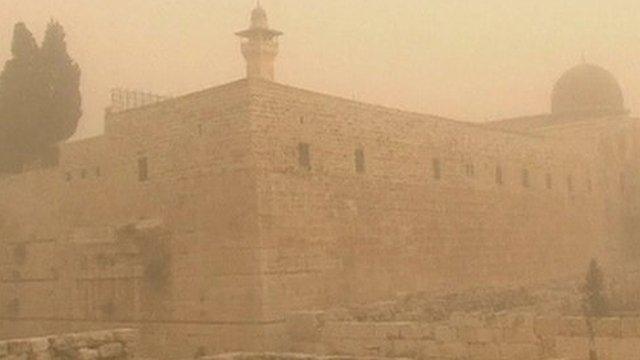
- Published15 April 2016
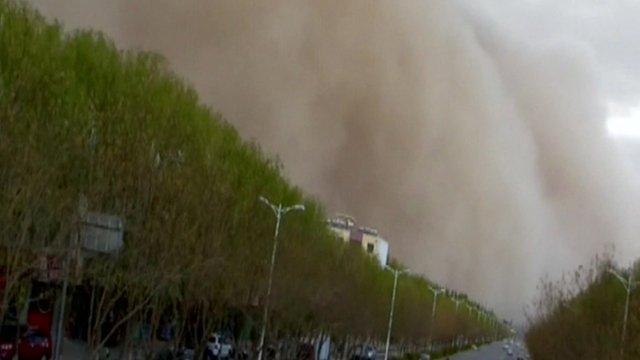
- Published2 April 2015
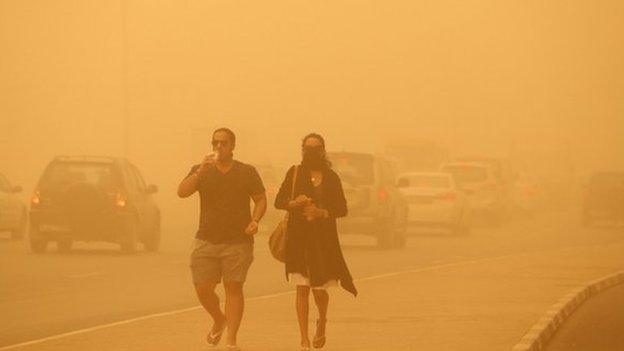
- Published11 February 2015
